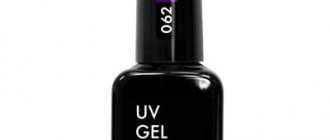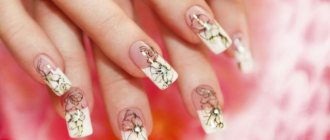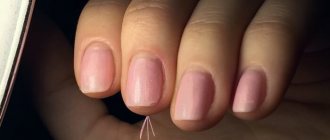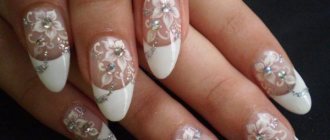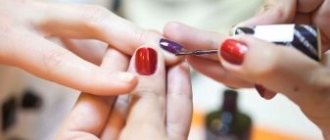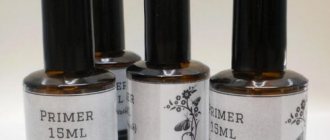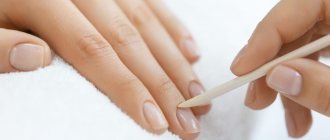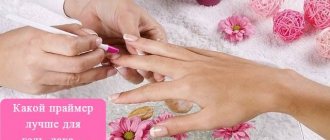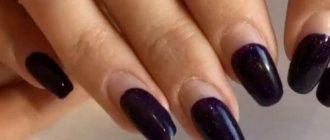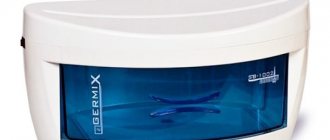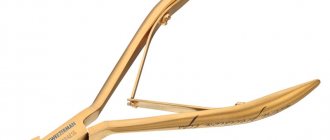Decorating with rhinestones is a luxurious way to add sparkle to any item. They sparkle beautifully in the light, creating the effect of magical shimmer as part of an ornament or as an independent accent. Stones can be sewn or glued. Sometimes the fixing layer is applied to the elements themselves, but in other cases a suitable adhesive is required.
Types of glue
In order not to spoil the fabric, be very careful when choosing a fixing agent. Avoid products containing acetone - they can cause damage. When choosing an adhesive, you should take into account toxicity, odor, adhesion strength, color, and setting speed.
"Moment Crystal"
This adhesive with a transparent texture is easy to apply and really sets instantly—it’s impossible to correct an incorrectly glued part. Dispense this product carefully - it dries quickly, forming a film. Another disadvantage is the smell, so when choosing a “moment”, ventilate the room and take breaks during the process.
Fericyl Fabric Glue
When applied, its color is white, which allows you to control the process. It then dries quickly, becoming transparent. First, it is better to drop glue onto the stones, dry for a few seconds, and then place it on clothes. It adheres to the surface quite quickly, plus you can work with it even on a vertical plane. Important! Final drying will take almost 24 hours, do not use the product during this time. If you want to speed up the process a little, use a hair dryer on low power, but watch the fabric heat up.
E6000 CRAFT
American textile glue does not smell, holds tightly and is easily removed from clothing if you drop it in the wrong place. Most often, Swarovski crystals are glued to them and used in the manufacture of costumes for performances, because the composition allows the glue to maintain its hold in water (including salty water) and during active wear.
Danscouture
As the name suggests, this US-made adhesive is often used to attach rhinestones to dancers' costumes. It is non-toxic, water-based and does not change the shape of the fabric when drying, which is especially important for stretchable products. It fits well on almost any textile, but you won’t be able to decorate leather items with it.
Swarovski CG 500 35
This durable epoxy-based adhesive is used in jewelry making and is good for decorating hard surfaces, household items, and accessories. It’s best not to use it on fabric, but it’s perfect for decorating bags, glasses, phone cases and other details of your look.
How to glue hot fix rhinestones
In order to attach self-adhesive rhinestones, you will need an iron or a soldering iron for stones. You can also fix them with a heat gun or glue.
To attach such stones with an iron, follow these steps:
- Place your clothes on a flat surface or ironing board.
- On the costume, draw a sketch with a pencil according to which you will glue the stones.
- Place adhesive-backed rhinestones on top of the design.
- Before gluing thermal rhinestones to fabric with an iron, place a sheet of paper or a cotton napkin on them that does not fade.
- Heat the iron and place it on a piece of paper or fabric. First set the minimum temperature. Then it should be increased a little. The iron should be held in this position for 10-12 seconds.
In order to firmly fix hot-melt rhinestones, you must carefully monitor the temperature conditions and the level of pressure on the stones.
How to glue rhinestones to clothes
The method in which you attach the crystals to the product directly depends on the type of rhinestone. They are divided by the method of fastening (sewn and glued), by the form in which they are sold, by the presence or absence of an adhesive layer, as well as by the material from which they are made. The most expensive rhinestones are glass; due to the content of lead oxide and the cut that forms the refraction of light, they shine very brightly and shimmer in all colors. A much cheaper option is acrylic. Rhinestones made from this material shine much less, but in some cases this is just more appropriate. One of the disadvantages of acrylic rhinestones is their fragility. There are also metal rhinestones, which are often used in decoration. All crystals, depending on the composition and type, can be glued in three ways:
- using glue;
- iron;
- by removing the special film (self-adhesive rhinestones).
How to attach rhinestones with glue
Once you've chosen the right glue, prepare your workspace. It is better to pre-wash the product. Place thick cardboard under the layer of material, stretch knitwear and elastic fabrics to the desired size and secure. Mark the design and location of the rhinestones with a washable pencil or chalk. Having prepared everything, get to work.
You can apply rhinestone glue to fabric, or directly to crystals. The first method is suitable if the pattern is quite dense or the rhinestones are too small and not very convenient to work with. The second option is good when working with large stones, as well as for single or point decoration. Try not to re-glue the same element several times, so as not to spoil the fabric. The algorithm of actions is quite simple.
- Apply glue to the rhinestone or fabric.
- Take the crystal with tweezers or a wax stick.
- Place the element on the product and press lightly.
- Be sure to wait the time indicated on the glue package to allow the composition to set.
Important! If you applied glue directly to the fabric, then the stone must be placed exactly in the center of the drop. Try to keep the size of the glue dot smaller than the rhinestone itself - then there will be no extra sloppy spots around.
We fasten the rhinestones with an iron
Sometimes gluing rhinestones with glue is not the best option. For this case, special crystals with thermal film, which is activated when heated, are suitable. There are two ways to place rhinestones on fabric using an iron. The first is to lay the design directly on the fabric, cover with a cotton cloth for ironing and press the rhinestones to the product at medium heat. This option is suitable for heaped placement of decor, as well as for a non-slip surface. The second method is to first heat the rhinestones and then transfer them to the fabric. This is where things get a little more complicated.
- Place the crystals on the surface of a cold iron, adhesive side up.
- Mark the design on the material.
- Plug in the iron and wait until the glue heats up.
- Pick up the rhinestones with tweezers and quickly place them on the fabric, applying light pressure.
A special applicator with various attachments will help make the task easier. The crystal is placed in a suitable nozzle. Then the device heats up - and you can transfer the stone to the material. The applicator is indispensable when working with delicate fabrics and fleecy materials such as velvet.
Adhesive rhinestones
There are also crystals that do not require heat treatment when gluing - to place them you just need to tear off the protective film and apply it to the fabric. The disadvantage is that the fixation on the product is not strong enough, but if speed and ease of use are your priority, then look for just such decorative elements.
Which rhinestones are more convenient and practical
Rhinestones are often used in sewing industries. You can also attach these stones to your clothes yourself. This way you can save money and get satisfaction from creativity. Based on the type of fastening to fabric, rhinestones are divided into two types:
- hot fix;
- cold fixation.
Each of these types of crystals has its own advantages and disadvantages. Cold fix rhinestones are attached to the fabric using special glue. They have a flat, smooth back surface. Glue is applied to it, and then the rhinestones are placed on the fabric. After several hours, the rhinestones adhere securely to the fabric. Cold-fix rhinestones are cheaper than hot-fix rhinestones. They can be used with different types of materials, especially thin and mesh ones.
There is already glue on the back of the thermal rhinestone. When heated, the substrate of such a crystal melts, and after cooling it is securely fixed to the material. This saves time if you need to attach a large number of rhinestones to clothing. Also, you will not have problems with applying glue: excess glue will not come out from under the crystals.
Before gluing thermal rhinestones at home, check whether high temperatures can be applied to your material. It is not recommended to attach such crystals to the following surfaces: plastic, vinyl, leather. You should also be careful when working with thin fabric.
Caring for a decorated product
How firmly the rhinestones will adhere to the product depends on the glue and the material from which the clothing is made. When washing and wearing a product decorated with sparkling stones, follow the recommendations specified in the instructions for the glue you used. But there is a set of standard rules that will allow your things to remain in perfect condition longer:
- avoid prolonged contact with water (unless the glue is specifically designed for this);
- Iron the product using gauze or thin cloth;
- When washing, use a cycle and detergents for delicate fabrics;
- do not wash such items with conditioner;
- make sure that the fabric with the decor applied to it does not overheat;
- It is best to wash the product by hand in water no higher than 30 degrees.
Add to these recommendations those indicated on the glue packaging - and then your product will definitely not suffer during use.
General information
Glue for rhinestones
The most reliable way to glue rhinestones is to use specialized glue. This glue ensures reliable adhesion of the rhinestones to the fabric.
Epoxy resin is a universal adhesive for all types of surfaces, with the exception of glass. When using this glue, you should pay attention to the following nuances: complete drying time is 72 hours, and if used carelessly, noticeable marks may remain.
Fabric glue - produced in special sealed containers with a pointed top, which allows you to carefully distribute the required amount of glue onto the fabric. Another important advantage is that after complete drying, no traces remain on the fabric; the glue becomes completely transparent.
“Moment Crystal” is an adhesive with a transparent structure, easy to apply, dries quickly enough, and leaves no marks. Important: the glue quickly sets on the fabric, and it is no longer possible to change the position of the rhinestone. In addition, the glue has a specific and unpleasant odor; prolonged use can have a negative impact on health.
“ Fevicryl Fabric Glue ” bottle has a very convenient applicator spout, making it very easy to apply the right amount of glue. The glue does not stretch, it is white, but after drying it becomes transparent. After applying the rhinestone to the fabric, you have a couple of seconds to adjust its location, since the glue sets quite quickly. The glue dries completely within 24 hours; if you need to speed up this process, we recommend using a hairdryer.
Important: the product can be washed after seven days and only in cold water.
"E6000 CRAFT" is a specialized textile adhesive made in the USA. Odorless, viscous, so threads may form between the drops. But excess glue is very easy to remove from the fabric. Glue is often used to decorate products with Swarovski fabrics.
The main advantage: the special waterproof formula of the glue allows the product to be used in sea and fresh water, as well as machine washable.
" Danscouture " water-based rhinestone glue, made in the USA. Non-toxic, transparent emulsion, does not cause fabric deformation. Often used to decorate the costumes of gymnasts, figure skaters and dancers with rhinestones.
Important: not suitable for leather products.
Types of rhinestones
Depending on the type of material, decorative stones come in three types:
- - acrylic, made of plastic, inexpensive and lightweight decorative elements. During use they lose their shine and become cloudy.
- - metal products are much stronger, but do not have a shining shine;
- — glass, do not fade even after numerous washes. Glass rhinestones made using oxide and lead are of very high quality. Such decorative products are the most expensive.
According to the method of attachment to the material, they are distinguished: adhesive and sewn.
Adhesive. The glue is either on the thermal rhinestone or it needs to be applied to the fabric. Apply cold or hot.
Sew-on. They have a special hole for sewing to fabric.
Hot-melt adhesive, fixed to fabric due to exposure to high temperatures. In order to stick rhinestones, you will need to place them on the fabric and heat them using an iron or a special soldering iron.
Cold fix rhinestones are fixed to the fabric using special glue.
Important: this work requires care so that there are no traces of glue left on the fabric.
What are rhinestones?
Rhinestones - inherited this name (from German Strass) thanks to the glassmaker, and later to the professional jeweler, who invented them at the end of the 18th century, G. Strass. He went down in history with his skill in making imitation precious stones.
In the process of lengthy experiments, he invented potassium glass with an increased percentage of the lead component. This allowed the master to create glass stones that look as much like genuine diamonds as possible, with a high refractive index and color shimmer.
What are they made of?
The illusion of diamonds or other gems is made from:
- glass;
- crystal;
- acrylic;
- metal, plastic.
Well, let's take a closer look at glass, because in fact, not everything is so simple. In this area, the cost varies greatly due to the quality of the stone made.
If it is cast using the usual method in a faceted blank, the price will be significantly lower. Also, shine and light refraction will be of poor quality. But if it was cast, and additionally processed and polished, then this will give not only clarity to the edges, a different play of light, but also a natural radiance.
The highest quality and most expensive imitation, close to diamonds, is made from crystal. The play of light and transparency are not even discussed here. Among the large number of famous crystals are Swarovski crystals. They are made from highly transparent pure crystal, the likes of which cannot be found anywhere else on the globe.
The highest quality “Swarovski” is interpreted in two versions:
- The crystal contains an absolutely secret component.
- High, strict requirements are imposed on the craftsmen - if even one smallest pebble is found to be defective, the entire batch is returned for processing.
PLEASE NOTE! No matter how the secret of high-quality crystal is interpreted, not a single manufacturer in the whole world has yet managed to come even one step closer to such an ideal.
Acrylic types are made of plastic, are cheaper in price, and are lighter than glass and crystal counterparts. Over time, they may darken and lose their aesthetic appearance after wearing or washing.
Using an iron
Using an iron helps set the hot-melt rhinestones. This can be done in different ways.
First way
If the stones are the same size and are clustered on the product, they should be placed correctly, covered with gauze and ironed. The temperature regime is determined by the type of material. It is important to avoid high heat to prevent deformation of the fabric. However, heating should be sufficient. Otherwise, it will not be possible to fix the crystals. Under the influence of heat, the composition enters the fabric and provides reliable fixation.
Second way
In this case, the iron is placed with the sole up. You should apply rhinestones to a cold surface. They should be with the adhesive side facing up. The required pattern should be applied to the paper. A transparent fabric should be placed over the design.
Then heat the iron to medium temperature and wait until the glue boils. The stones should be picked up with a needle and immediately transferred to the fabric. At the same time, they should be turned over and gently pressed onto the crystals. This ensures more reliable contact with textiles.
Rules for choosing glue
What kind of glue should I use to glue rhinestones onto fabric so that the decorations stick well and look beautiful:
- Different types of "Moments". Any consumer can afford to purchase these products in any supermarket or retail store. If you use such glue, the strength of the rhinestones is ensured, but there is a drawback - it is virtually impossible to correct the mistake.
- Specialized glue for rhinestones. This product is suitable for various types of stones, perfectly adheres to various surfaces, but is not very effective for the skin. Its main component is water elements. Also, a huge advantage of this material is its colorlessness after hardening.
- Epoxy (adhesives based on it). They have proven themselves to be excellent for beginners; they can be dosed rationally, as they have a viscous consistency.
- Universal adhesives. Such products are also quite sufficient in hardware stores; they can glue all types of fabrics and leather. PVA, hair and nail polishes, and textile adhesives are also suitable. You need to be extremely careful with non-professional products; they are used by more experienced craftsmen who are not afraid of ruining the item.
You can glue rhinestones to fabric in various ways.
In order to get beautiful and fashionable clothes, special attention must be paid to the choice of glue. Don’t forget to practice on an unnecessary piece of clothing before work, so as not to correct mistakes on your favorite clothing.
The choice of glue should be given special attention.
How to remove glue from rhinestones from clothes?
ON A NOTE! If for some reason a pebble falls off, it is not securely attached, or the fabric is accidentally stained with an adhesive substance, don’t worry!
There are proven methods to clear such traces:
- Lightly dampen the cloth with pure alcohol on the back side - this will reduce the adhesion of the paste to the coating. Then pick up the bead with a sharp object, trying to catch the solution as well. We wrote about this method in reviews: how to remove stickers from clothes and glass.
- The next safe method is freezing. For these purposes, you can use the freezer. The composition of the thermoactive agent will quickly collapse as a result of freezing. Wrap the item in film, place it in the chamber and wait 4-5 hours. After that, all that remains is to peel off the crystals. As a rule, they are removed along with the substance.
- You can wipe off the stain with turpentine a couple of minutes after application. Wipe off the glue carefully, without smearing the emulsion over clean areas of the coating. Residues can be easily erased with a simple eraser. Read also: how to remove super glue from clothes.
Alternative to glue
You can decorate not only with glue. There are other types of rhinestones for which you do not need to purchase special adhesives.
Thermal rhinestones
They can be glued by heating with an iron or a special applicator resembling a soldering iron. The glue that is applied to the flat surface of the rhinestone melts when heated and becomes viscous, which allows them to be attached to the material.
Sew-on
For some fabrics these embellishments are more suitable. On thin and fleecy materials, rhinestones that are attached with glue do not hold tightly enough. For this type of textile, sew-on rhinestones are indispensable. The advantage is that you can always change the rhinestone to another place without spoiling the material.
The disadvantage is that it is more labor-intensive.
To make something decorated with artificial stones look expensive, you need to choose high-quality rhinestones. They undoubtedly have a higher cost, but they look chic for a long time.
How to sew a belt to trousers
How to sew gloves from knitwear
Gluing with adhesive tape
This method is used if you need to transfer a large pattern, which would be difficult and time-consuming to attach one stone at a time. The process occurs in several steps:
- The rhinestones are laid out on adhesive tape with the adhesive side up;
- The film is transferred to clothing and then ironed;
- The film is removed.
You might be interested in: Creating a pattern and sewing a beach bag with your own hands
Scotch film helps transfer a large picture
This method saves effort and time, but it has a significant disadvantage: the stones are fixed in a large group, some may not grab and come off.
Types of crystals
Gluing methods completely depend on the type of beads. Therefore, in order to figure out how to glue rhinestones with glue, you need to correctly divide the products into types according to their fixation on the material.
Selecting a product:
- Cold-fix pebbles (No Hot-Fix) - without paste on the back side. For fixation you will need to purchase a special solution. Such decorations are mostly used to decorate phone cases, art objects, dresses, shoes, underwear, suits of various accessories, women's handbags, and cars.
- Hot-melt adhesive beads (Hot-Fix). They are intended mainly for decorating things. The element substrate is coated with a thin film of ready-made paste. To attach, you will need an ordinary household iron, a professional soldering iron, but a steam generator will also do. The adhesive mass melts under the influence of high temperature and the crystal is firmly glued to the coating.
How to lay out designs from rhinestones with your own hands?
Many people are interested in the question of how to lay out a drawing correctly. It should be immediately noted that it is not necessary to assemble the drawing during gluing, because the procedure is lengthy and requires reliable fixation of each individual component. It is better to lay out the pattern before this, so that in the future you will have an idea of where to start and in which direction to move.
Therefore, think thoroughly about the planned drawing, make an accurate sketch on thin paper or transparent tracing paper. Lay out the required picture on the life-size sketch.
ON A NOTE! To transfer creativity to fabric, it is allowed to use soft crayons or ordinary pencils, traces of which can be easily erased from the mother’s covering. Then it is advisable to wash the fabric, dry it and degrease it with alcohol, this will give reliable adhesion.
